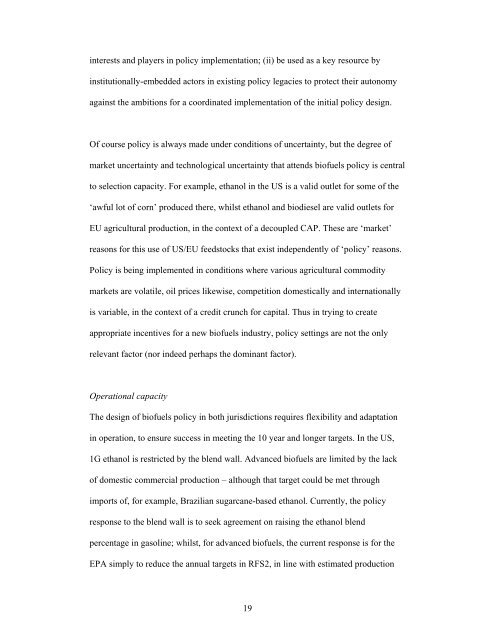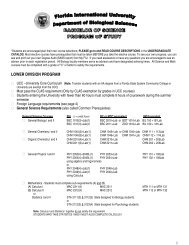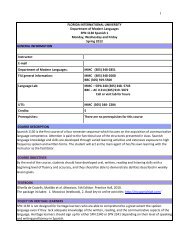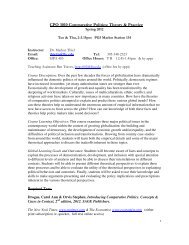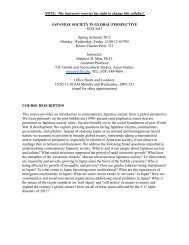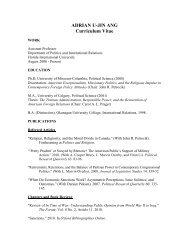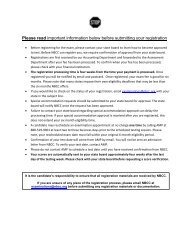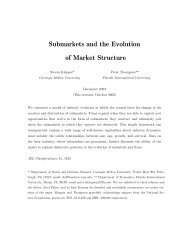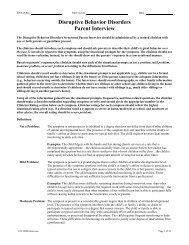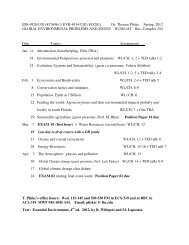Dr. Ackrill paper (*.pdf)
Dr. Ackrill paper (*.pdf)
Dr. Ackrill paper (*.pdf)
You also want an ePaper? Increase the reach of your titles
YUMPU automatically turns print PDFs into web optimized ePapers that Google loves.
interests and players in policy implementation; (ii) be used as a key resource by<br />
institutionally-embedded actors in existing policy legacies to protect their autonomy<br />
against the ambitions for a coordinated implementation of the initial policy design.<br />
Of course policy is always made under conditions of uncertainty, but the degree of<br />
market uncertainty and technological uncertainty that attends biofuels policy is central<br />
to selection capacity. For example, ethanol in the US is a valid outlet for some of the<br />
‘awful lot of corn’ produced there, whilst ethanol and biodiesel are valid outlets for<br />
EU agricultural production, in the context of a decoupled CAP. These are ‘market’<br />
reasons for this use of US/EU feedstocks that exist independently of ‘policy’ reasons.<br />
Policy is being implemented in conditions where various agricultural commodity<br />
markets are volatile, oil prices likewise, competition domestically and internationally<br />
is variable, in the context of a credit crunch for capital. Thus in trying to create<br />
appropriate incentives for a new biofuels industry, policy settings are not the only<br />
relevant factor (nor indeed perhaps the dominant factor).<br />
Operational capacity<br />
The design of biofuels policy in both jurisdictions requires flexibility and adaptation<br />
in operation, to ensure success in meeting the 10 year and longer targets. In the US,<br />
1G ethanol is restricted by the blend wall. Advanced biofuels are limited by the lack<br />
of domestic commercial production – although that target could be met through<br />
imports of, for example, Brazilian sugarcane-based ethanol. Currently, the policy<br />
response to the blend wall is to seek agreement on raising the ethanol blend<br />
percentage in gasoline; whilst, for advanced biofuels, the current response is for the<br />
EPA simply to reduce the annual targets in RFS2, in line with estimated production<br />
19


